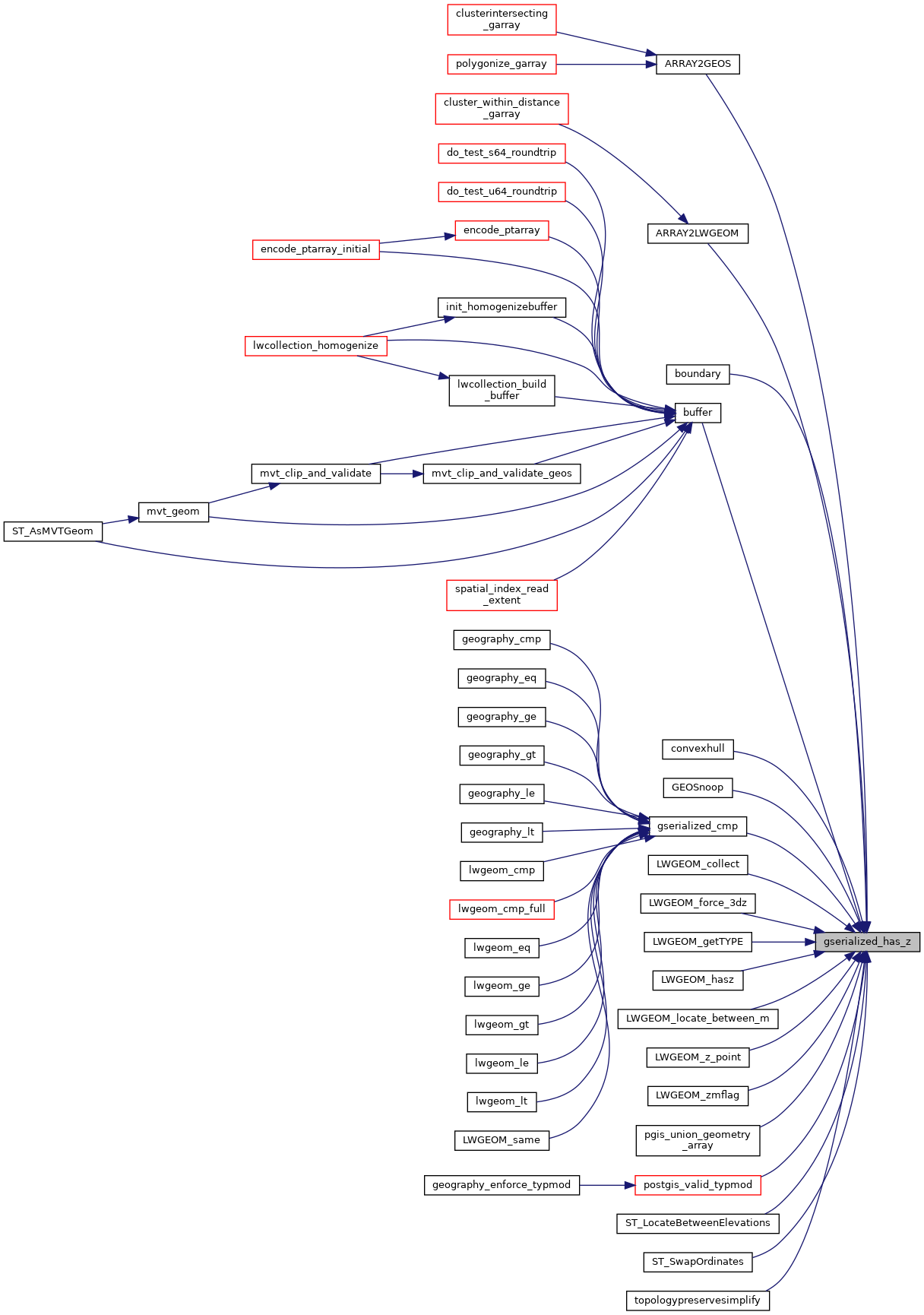◆ gserialized_has_z()
| int gserialized_has_z | ( | const GSERIALIZED * | g | ) |
Check if a GSERIALIZED has a Z ordinate.
Definition at line 174 of file gserialized.c.
int gserialized1_has_z(const GSERIALIZED *gser)
Check if a GSERIALIZED has a Z ordinate.
Definition: gserialized1.c:94
int gserialized2_has_z(const GSERIALIZED *g)
Check if a GSERIALIZED has a Z ordinate.
Definition: gserialized2.c:156
References GSERIALIZED::gflags, GFLAGS_GET_VERSION, gserialized1_has_z(), and gserialized2_has_z().
Referenced by ARRAY2GEOS(), ARRAY2LWGEOM(), boundary(), buffer(), convexhull(), GEOSnoop(), gserialized_cmp(), LWGEOM_collect(), LWGEOM_force_3dz(), LWGEOM_getTYPE(), LWGEOM_hasz(), LWGEOM_locate_between_m(), LWGEOM_z_point(), LWGEOM_zmflag(), pgis_union_geometry_array(), postgis_valid_typmod(), ST_LocateBetweenElevations(), ST_SwapOrdinates(), and topologypreservesimplify().
Here is the call graph for this function:

Here is the caller graph for this function:
